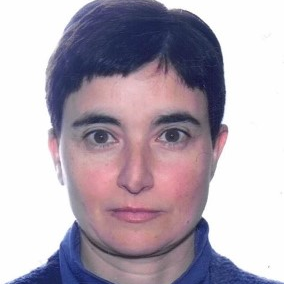State of the Art in Stem Cell Culture for Regenerative Medicine
A special issue of Cells (ISSN 2073-4409). This special issue belongs to the section "Stem Cells".
Deadline for manuscript submissions: 31 August 2024 | Viewed by 981
Special Issue Editors
Interests: cell differentiation; cardiac cell therapy; biomaterials; three-dimensional cell cultures; stem cells; extracellular matrix
Interests: anatomy; histology; cell biology; congenital heart defects; adult stem cells
Special Issue Information
Dear Colleagues,
The unique properties of stem cells, namely self-renewal and differentiation, make them capable of tissue and organ maintenance, endowing abilities of regeneration during physiological cell turnover or after pathological cell injury and loss. For these reasons, stem cells of various differentiation potential, i.e., pluripotent, multipotent, and unipotent (tissue-specific), have been isolated, manipulated, and evaluated in the pre-clinical and clinical studies for their use in regenerative medicine. Since the in vitro properties of these cells do not necessarily translate into tissue or organ regeneration when administered in vivo, the interactions between cells, extracellular matrix/scaffold and cytokines/growth factors are considered essential for guaranteeing cell properties and overseeing regulation in the living tissue, giving rise to bioengineering. Nowadays, regenerative medicine investigates several in vitro cell enhancement strategies, aiming at long-term cell survival, differentiation and tissue-specific function without genomic instability and rejection. The scope of this Special Issue is to present and discuss (in the form of original research papers and descriptive reviews) the state of the art in cell culture for regenerative medicine.
Potential topics include, but are not limited to: embryonic and induced pluripotent stem cells or tissue-specific, unipotent stem cells; classic or three-dimensional support; decellularized native extracellular matrix or biomimetic bio-engineered scaffolds; growth factor stimulation or mechanical activation for differentiation and structural organization; and any other emerging approach influencing the in vitro translation of the in vivo conditions for stem cell culture.
Dr. Franca Di Meglio
Dr. Daria Nurzynska
Prof. Dr. Clotilde Castaldo
Guest Editors
Manuscript Submission Information
Manuscripts should be submitted online at www.mdpi.com by registering and logging in to this website. Once you are registered, click here to go to the submission form. Manuscripts can be submitted until the deadline. All submissions that pass pre-check are peer-reviewed. Accepted papers will be published continuously in the journal (as soon as accepted) and will be listed together on the special issue website. Research articles, review articles as well as short communications are invited. For planned papers, a title and short abstract (about 100 words) can be sent to the Editorial Office for announcement on this website.
Submitted manuscripts should not have been published previously, nor be under consideration for publication elsewhere (except conference proceedings papers). All manuscripts are thoroughly refereed through a single-blind peer-review process. A guide for authors and other relevant information for submission of manuscripts is available on the Instructions for Authors page. Cells is an international peer-reviewed open access semimonthly journal published by MDPI.
Please visit the Instructions for Authors page before submitting a manuscript. The Article Processing Charge (APC) for publication in this open access journal is 2700 CHF (Swiss Francs). Submitted papers should be well formatted and use good English. Authors may use MDPI's English editing service prior to publication or during author revisions.
Keywords
- stem cells
- cell culture techniques
- regenerative medicine
- tissue engineering








